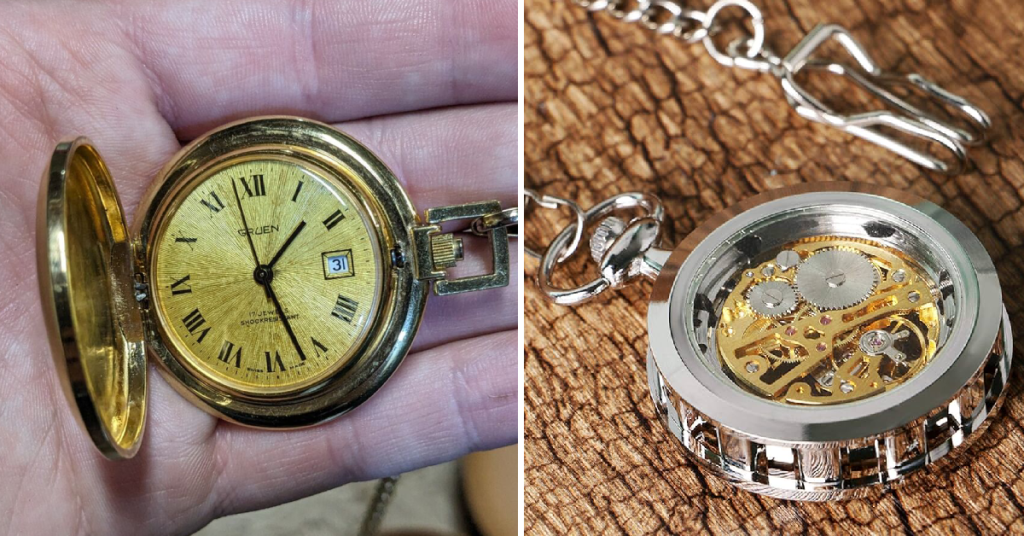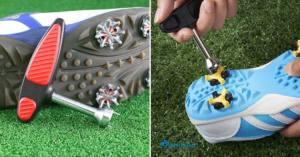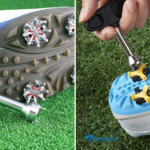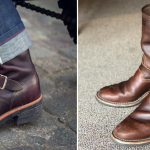Pocket watches, with their timeless charm, have been around for centuries. Adjusting the time on these intricate devices requires a bit of finesse and know-how. In this blog post, you’ll learn everything you need to adjust your pocket watch, ensuring it keeps accurate time. By the end, you’ll not only master this art but also gain tips on maintaining your watch’s accuracy and longevity.

Tools Needed for Adjusting the Time
Before you begin, gather the necessary tools. This preparation ensures a smooth and successful adjustment process. You’ll need:
- A clean, flat surface to work on.
- A soft cloth to lay your watch on to prevent scratches.
- A loupe or magnifying glass for precision.
- A small, non-magnetic screwdriver, if your pocket watch has a screw-down crown.
Having these tools at hand will make the process easier and protect your valuable timepiece from potential damage. Remember, cleanliness and precision are key when handling delicate mechanisms.
Step-by-Step Guide to Adjusting the Time
Adjusting the time on your pocket watch is straightforward if you follow the steps carefully. Here’s a detailed guide to help you through the process.
Pulling the Crown to the Correct Position
The crown is the small knob on the side of your pocket watch. To adjust the time, you’ll first need to pull the crown out to the correct position. Most pocket watches have two positions:
- The first position is for winding the watch.
- The second position is for setting the time.
Gently pull the crown until you feel it click into the second position. Be cautious not to force it, as excessive pressure can damage the internal mechanisms.
Once the crown is in the second position, turn it slowly to set the correct time. Watch the hands of the clock carefully and ensure they are moving smoothly. If you feel any resistance or irregularity, stop immediately to avoid damaging the watch. After setting the time, push the crown back to its original position. This will ensure that the watch is properly sealed, preventing dust and moisture from entering. Regular maintenance and careful handling will help keep your pocket watch in perfect working condition for years to come.
Turning the Crown to Set the Time
Once the crown is in the correct position, you can turn it to set the time. Rotate the crown clockwise or counterclockwise (depending on your watch model) to move the hands to the desired time. Take your time with this step; rushing can lead to inaccuracies or damage.
Pay attention to the movement of the watch hands. Ensure they move smoothly without any resistance. If you encounter difficulty, double-check that the crown is properly positioned.
It’s also a good idea to stop just a minute or two before the actual time and then slowly approach the exact minute. This helps ensure the gears are properly aligned and avoids any unnecessary stress on the watch mechanism.
If your watch is equipped with a date function, be cautious when setting the time around midnight, as this can affect the date change. It’s often recommended to set the time forward past midnight and adjust backwards to avoid any complications.
Lastly, once the time is set, gently push the crown back to its original position. This action locks in the time setting and ensures the watch is sealed against moisture and dust. Always make sure the crown is securely pushed or screwed back in to maintain the watch’s water resistance.
Securing the Crown Back in Place
After setting the time, it’s crucial to secure the crown back in place. Push the crown gently back into its original position. You should feel a slight click, indicating it’s securely in place. Securing the crown is vital to protect your watch from dust and moisture. It also ensures the watch resumes its normal functions, including winding and timekeeping.
If the crown is not properly secured, dust and moisture could seep into the watch, potentially causing damage to its internal mechanisms. This could lead to inaccuracies in timekeeping or even permanent damage, requiring repairs. For watches with screw-down crowns, ensure you twist the crown in a clockwise direction until it is firmly locked. This extra step further reinforces the watch’s resistance to environmental factors.
Regularly checking the crown’s position can also serve as a part of maintaining your watch’s longevity. By making sure the crown is always secured, you avoid unnecessary wear and tear on the movement. Remember, a well-maintained watch not only keeps precise time but also retains its aesthetic and functional value over the years. Taking these small steps can be the difference in keeping your watch in perfect working condition for a long time.
Checking for Accurate Timekeeping
Now that you’ve adjusted the time, it’s time to check for accuracy. Compare your pocket watch against a reliable time source, such as an atomic clock or smartphone.
Allow the watch to run for a few hours and then recheck the time. This step ensures your adjustments were precise and that the watch maintains accurate timekeeping.
If you find discrepancies, make small adjustments as needed, and continue to monitor over the next few days. It’s important to ensure that the watch remains consistent over time, as some movements may settle in after initial adjustments. Consider logging the time accuracy daily to identify patterns or drifts that need further correction.
For those with mechanical watches, regular maintenance and servicing by a professional can also help maintain precision and durability. Keeping your pocket watch in a stable environment, protected from extreme temperature changes and shocks, will further enhance its performance.
Tips and Tricks for Maintaining Accuracy
Maintaining the accuracy of your pocket watch requires ongoing care. Here are some tips to keep your timepiece in top condition:
- Regular Winding: Wind your pocket watch daily if it’s mechanical. Consistent winding ensures it operates smoothly and maintains accurate time.
- Avoid Magnetic Fields: Keep your watch away from magnets and electronic devices, as magnetic fields can affect its accuracy.
- Professional Servicing: Have your pocket watch serviced by a professional watchmaker every few years. Regular maintenance prevents wear and tear and keeps your watch running accurately.
By following these tips, you’ll ensure your pocket watch remains a reliable timekeeper for years to come.
FAQs about Setting and Maintaining Pocket Watches
How often should I wind my pocket watch?
If your pocket watch is mechanical, it’s recommended to wind it daily at the same time. This ensures consistent performance and accurate timekeeping.
Can I set the time backwards on my pocket watch?
Yes, you can set the time backwards on most pocket watches. However, we recommend setting the time forward just past midnight and then adjusting back to avoid any complications with date changes.
Are there any special considerations when setting a vintage pocket watch?
Vintage pocket watches may require additional care when setting the time or winding due to their age and delicate mechanisms. It’s best to consult with a professional watchmaker for proper instructions and maintenance.
How do I know if my pocket watch needs servicing?
If you notice significant time discrepancies or any issues with the movement, it may be time to have your pocket watch serviced by a professional. Regular servicing can help maintain accuracy and prevent potential damage.
Can I wear my pocket watch while swimming or showering?
No, it’s not recommended to wear your pocket watch while swimming or showering as exposure to water can damage its internal mechanisms. Remember to always secure the crown back in place after setting the time to prevent moisture from entering the watch.
Conclusion
Adjusting the time on your pocket watch is a rewarding skill that enhances your appreciation for these mechanical marvels. With the right tools and a bit of patience, you can ensure your watch keeps precise time.
If you’re interested in further refining your horological skills or need personalized advice, consider booking a consultation with one of our expert watchmakers. They can provide insights tailored to your specific timepiece, helping you maintain its beauty and functionality.
Stay tuned for more tips and tricks on caring for your treasured timepieces.






